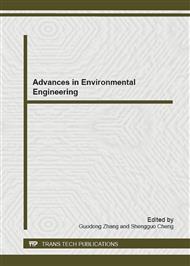p.757
p.762
p.769
p.773
p.777
p.781
p.787
p.795
p.807
Laboratory Measurement and Numerical Simulation of Evaporation Fluxes from a Thin Clay Layer
Abstract:
In order to measure evaporation fluxes from a thin clay layer in high precision, an enclosed chamber with high precision balance setting at the bottom was designed. It can control the humidity inside and measure mass changes with time automatically. Two clay samples in depth about 20mm were tested in laboratory and the data measurement lasted for 6 days. In the first 2 days, the evaporation flux was close to distilled water surface evaporation with the ratio between two values of 0.9. Within 3-5 days, the evaporation ratio reduced from 0.9 to 0.1. In the 6th days, the clay layer tended to dry and the evaporation ratio was close to zero. In contrast with laboratory test results, a numerical simulation was conducted by SEEP/W. The computed cumulative evaporation was only 0.14mm less than measured value, with the relative error no more than 4.1%.
Info:
Periodical:
Pages:
777-780
Citation:
Online since:
November 2012
Authors:
Keywords:
Price:
Сopyright:
© 2012 Trans Tech Publications Ltd. All Rights Reserved
Share:
Citation:


